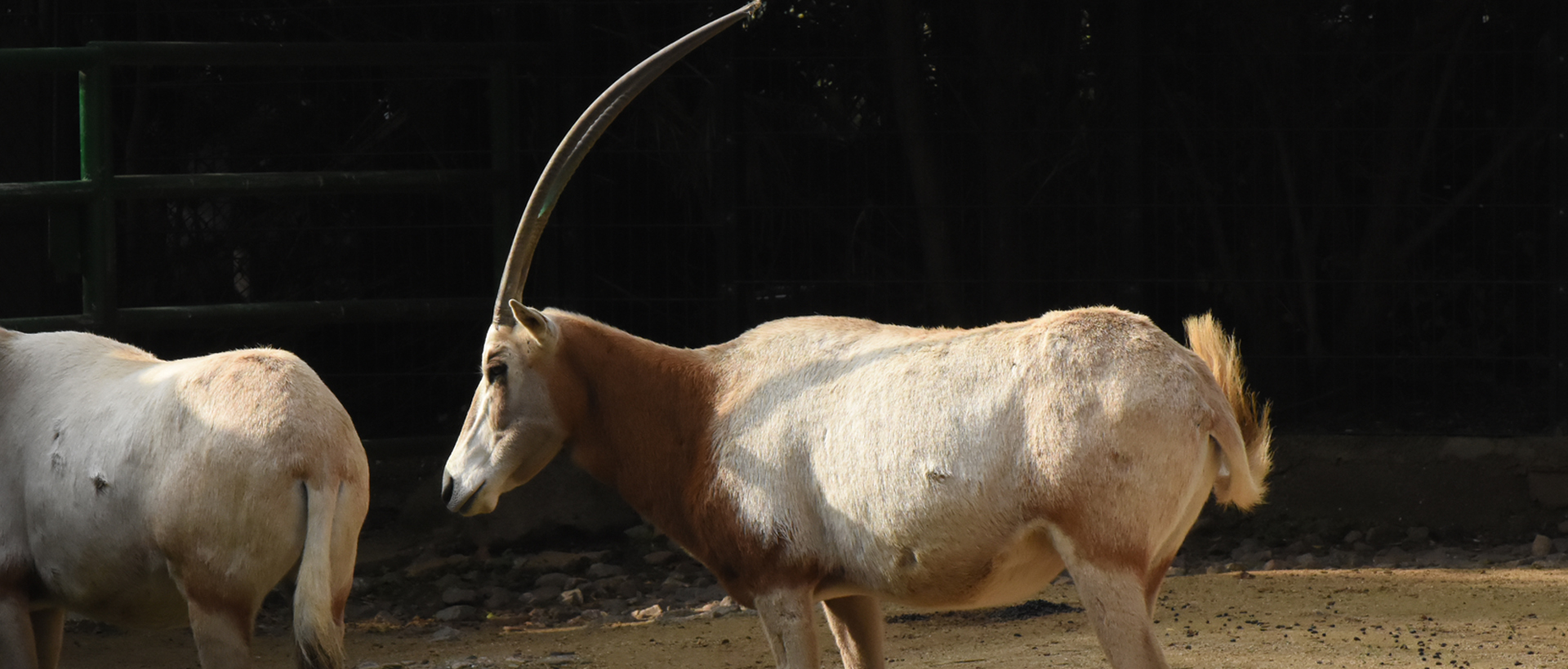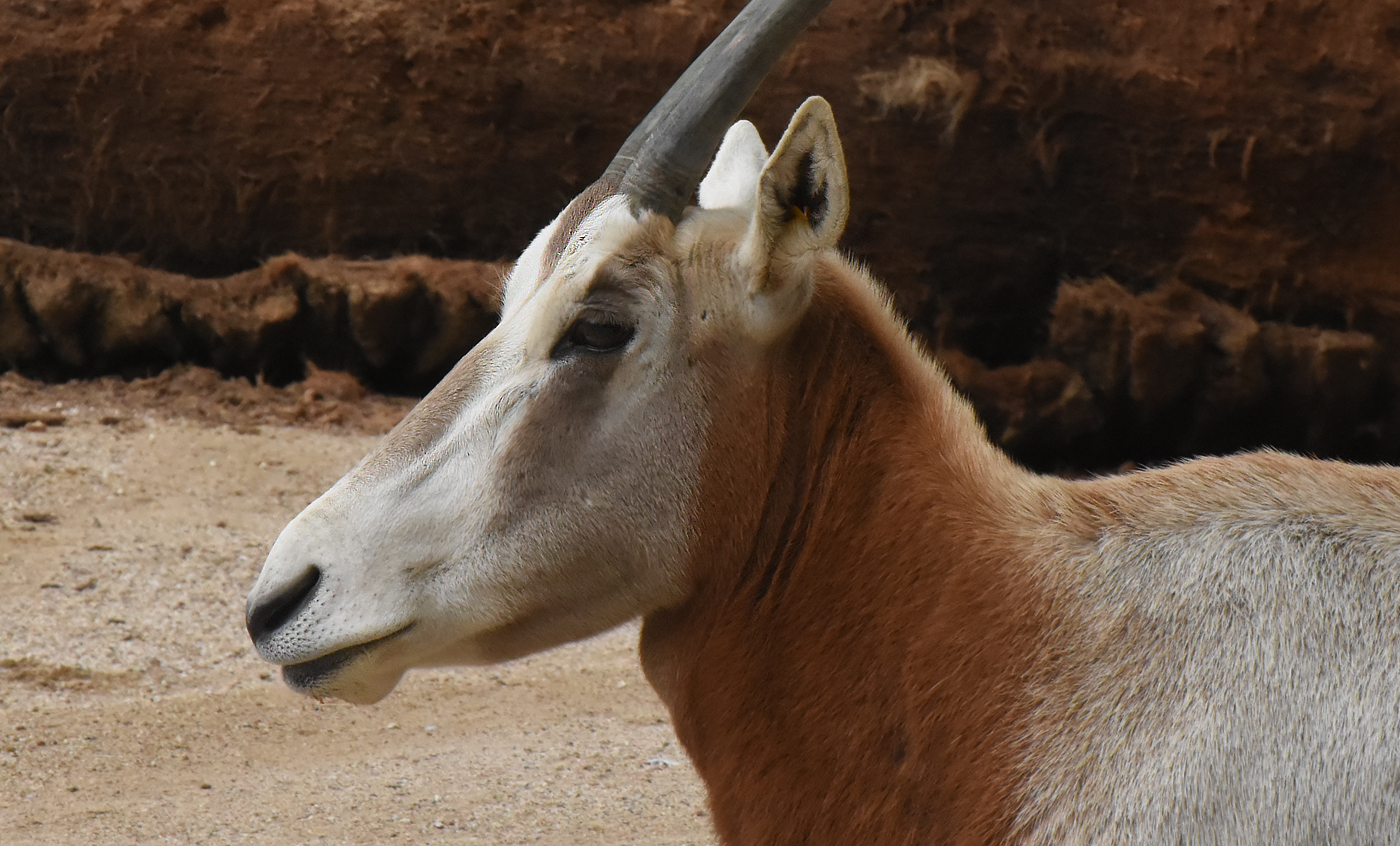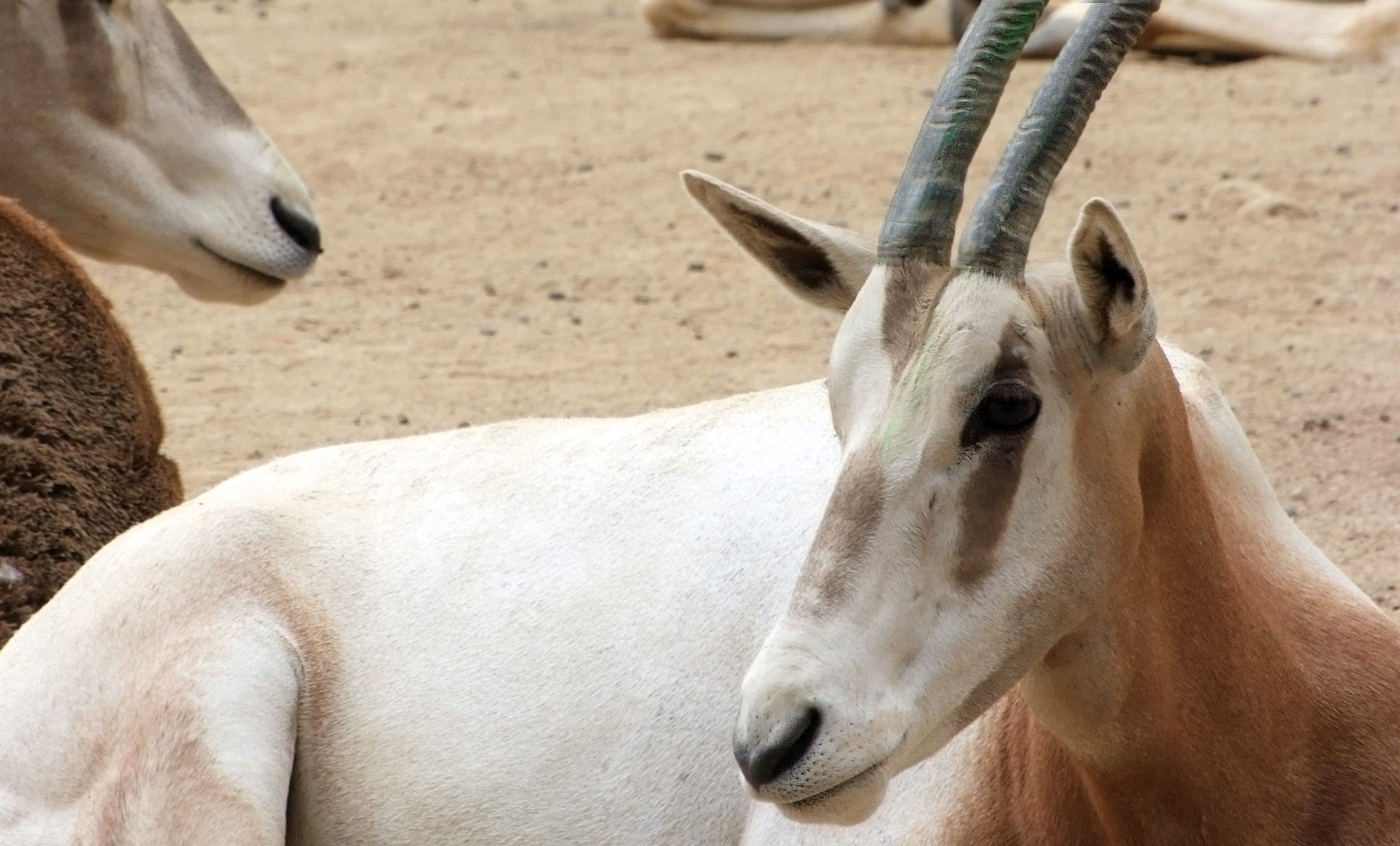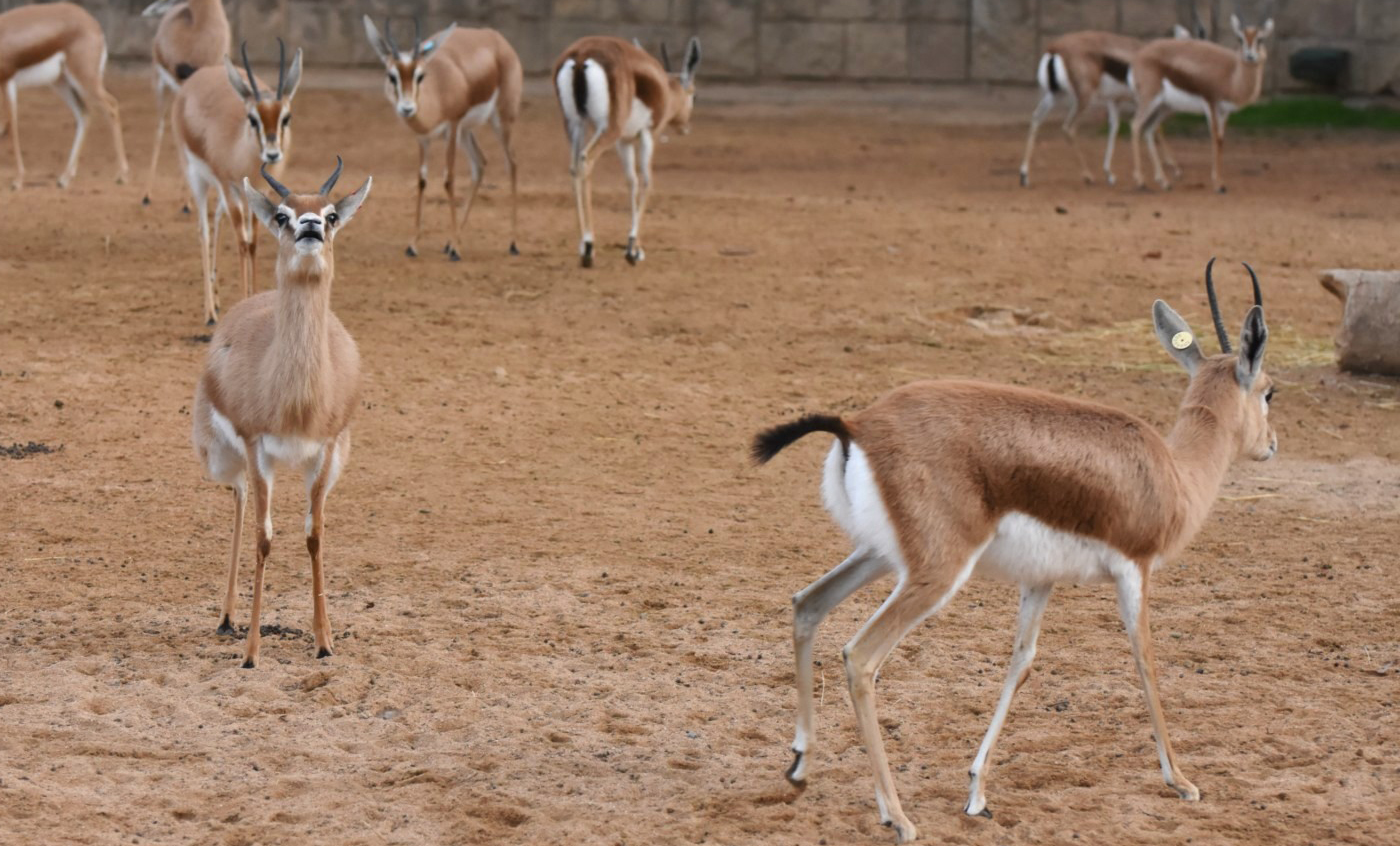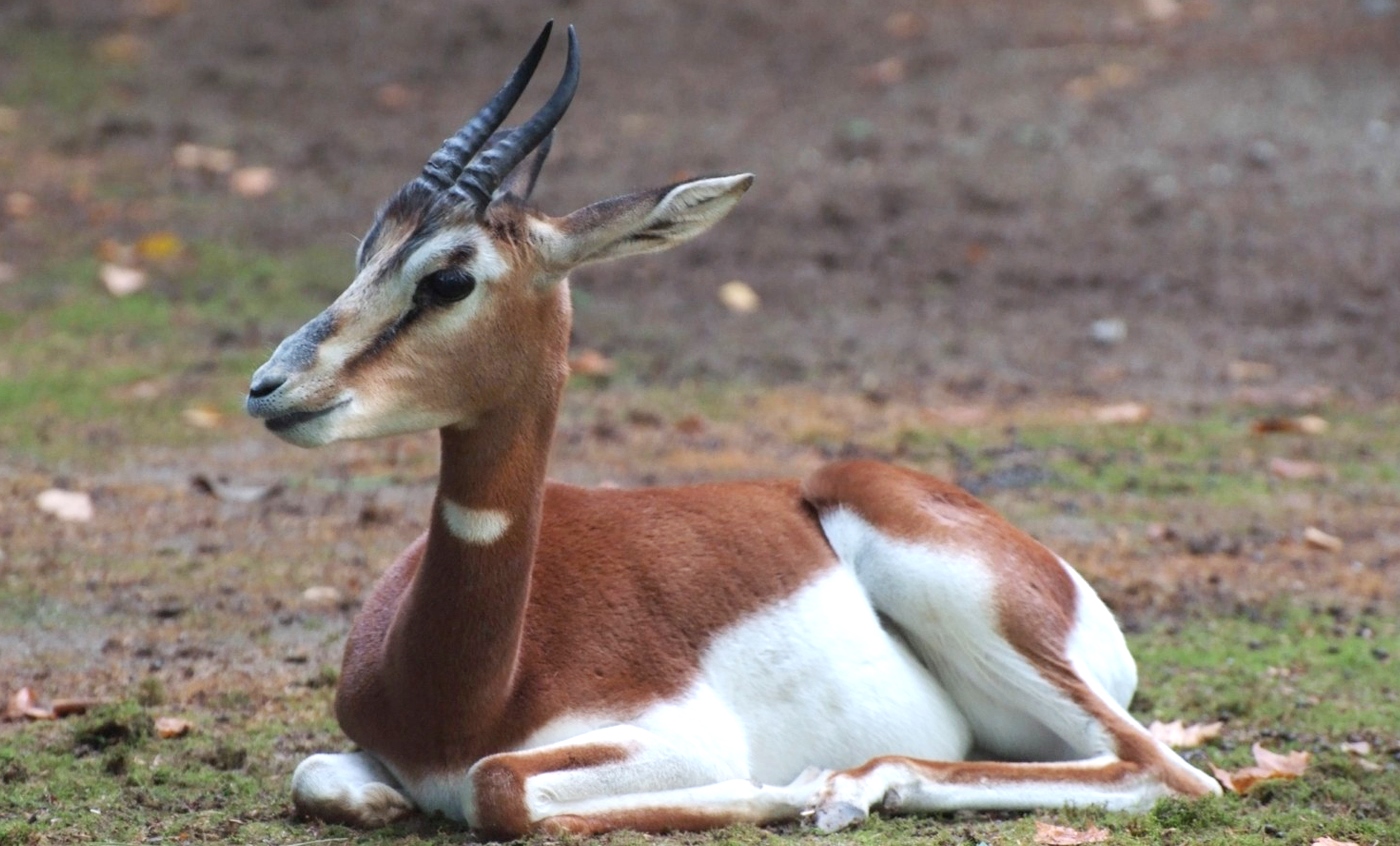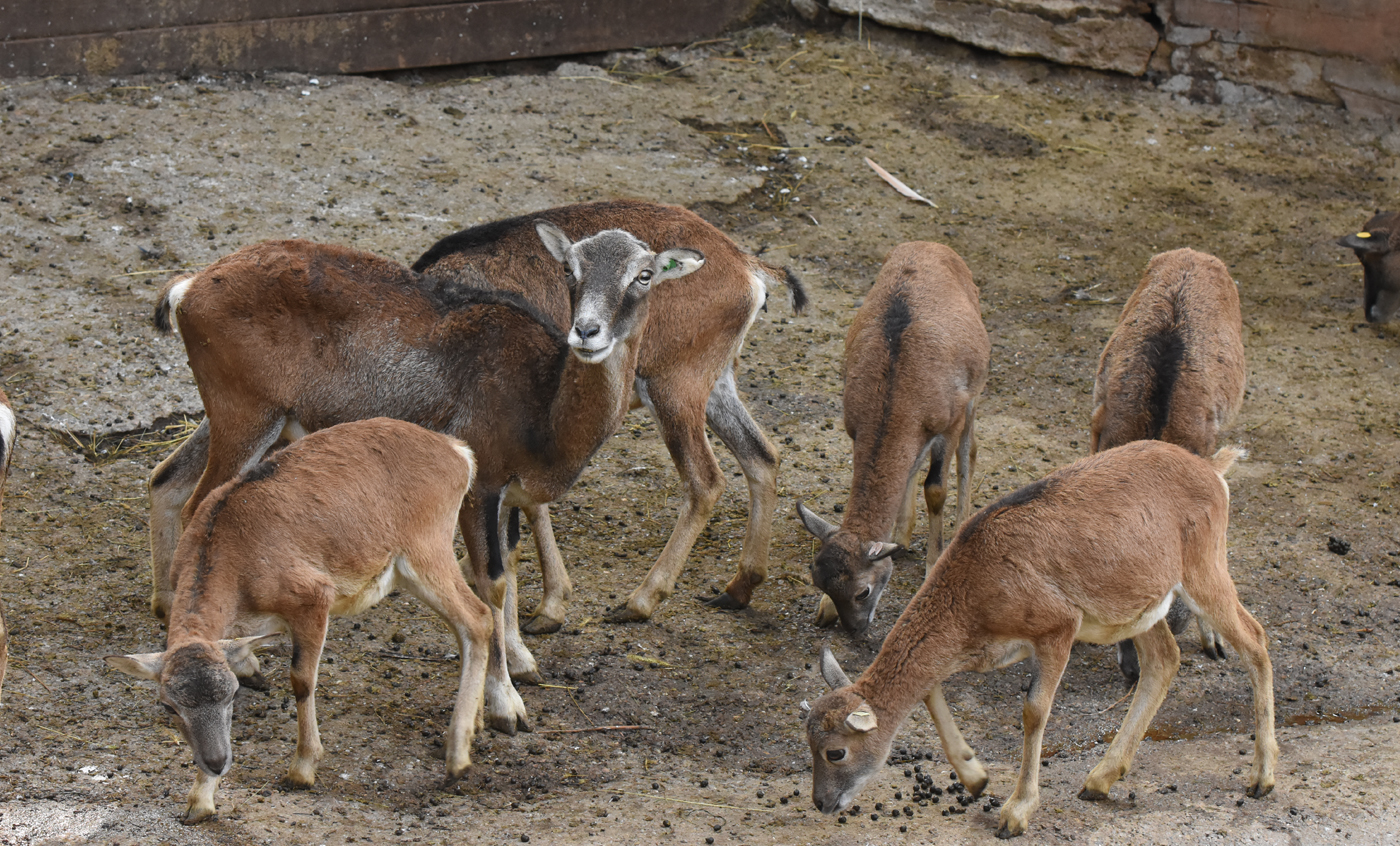Scimitar oryx
The scimitar oryx is an antelope that lives in the semi-desert regions of the Sahel, south of the Sahara, although it was formerly found further north, towards countries like Morocco and Algeria.
The species is characterised by its long horns, measuring up to 125 cm and curving backwards in the shape of a scimitar.
It is nomadic and continually roams in small groups in search of the scarce pasture which is its food.
Breeding program
Natural habit
Reintroduction projects in Tunisia, Morocco, Senegal and Chad with specimens preserved in zoos have allowed the recovery of this species that was considered extinct in the wild since 2000.
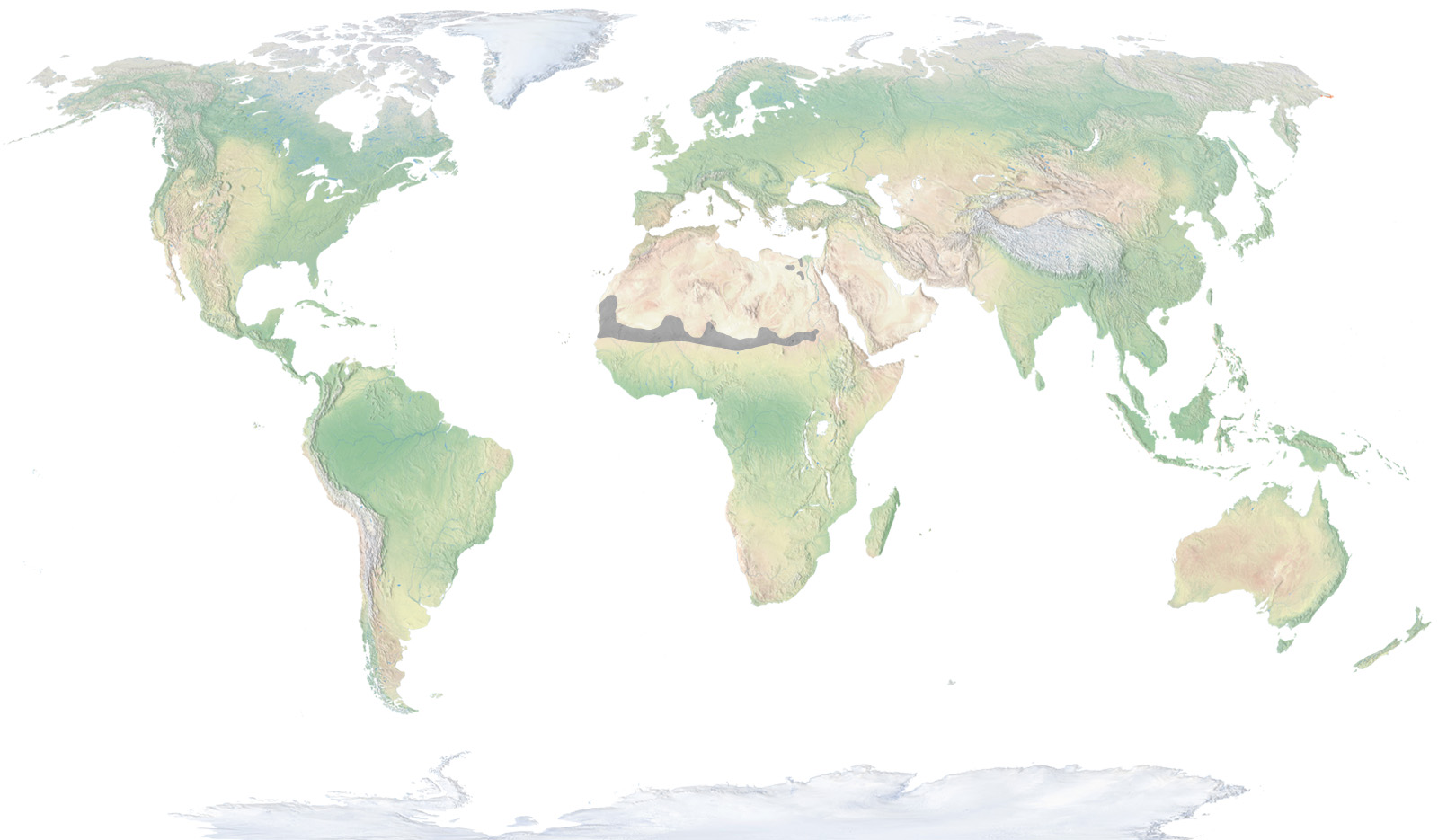
- Distribution / Resident
- Breeding
- Wintering
- Subspecies
Risk level
- Extint
- Extint in the wild
- Critically endangered
- In Danger
- Vulnerable
- Near threatened
- Minor concern
- Insufficient data
- Not evaluated
Taxonomy
Physical characteristics
Biology
Reproduction
Biology
It has the typical appearance of an oryx, but lacking the characteristic black facial mask of these antelopes. Its hair, mostly white, is reddish in the neck and the upper part of its legs. Both sexes have their characteristic horns, reaching up to 125 cm long, which are slightly curved backwards resembling the shape of a scimitar, which gives it its name.
Arid environments from the sub-desert bordering the African desert of Sahara.
It is herbivore and mainly feeds on all kind of grass, but also eats seeds, fruits and leaves from bushes, when available. It can spend long periods without drinking water.
It is herbivore and mainly feeds on all kind of grass, but also eats seeds, fruits and leaves from bushes, when available. It can spend long periods without drinking water.
It is a gregarious antelope that lives in small herds of females and calves, led by an adult male, continuously on the move, searching the scarce vegetation and water that is found in their arid habitat. However, during seasonal migrations or heavy rainy periods, they group in herds of hundreds of animals. Young males form small isolated groups that establish their hierarchy through impressive fights.
When water is not available, which happens often in its habitat, it can spend long periods without drinking, thanks to different physiologic adaptations, such as the ability to raise its body temperature to avoid sweating, or the ramification of the carotid artery that carries blood to the brain, into a network of arterioles, close to the veins that carry cooler blood from the snout, which enables for blood flowing to the brain to have a lower temperature.
Historically it inhabited all the Sahel strip, the arid region located at southern Sahara, and in northern Sahara, from the Atlantic Ocean to the shores of the Nile river. Little by little it disappeared from such a broad distribution area until it was declared extinct in the wild in 2000. One of the last known species to enter this situation.
The causes of this situation are, on one hand, excessive poaching, and on the other, degradation of its habitat, caused by human expansion, agriculture and the over-exploitation of water resources it brings, livestock and the unsustainable pressure cattle exert to the scarce vegetation of the environment. All this is causing an accelerated desertification of the Sahel region, which causes the disappearance of its native species, among which there is the scimitar onyx.
Fortunately, the conservation work developed with this species in zoos all over the world in recent years, and especially by the Marwell Zoo in England, has made it possible to begin to reverse the situation and offer it a real chance of recovery.This is a good example of the importance of keeping populations in captivity in order to preserve endangered species. The only reason scimitar onyx has not disappeared forever, without chance of any future recovery, is that there was a number of animals living in different zoos around the world, such as the Zoo of Barcelona. This has allowed for the reintroduction in protected areas of its natural habitat, as it has already been done in reserves of Tunisia, Morocco, Senegal and with remarkable success in Chad.
The Zoo of Barcelona takes part in the EEP of this species.



